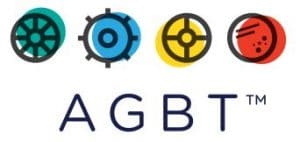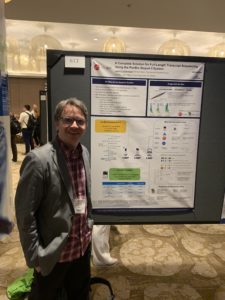 It was a pleasure to attend the annual Advances in Genome Biology & Technology meeting in sunny Marco Island, Fla., last month. The conference has a long history of supporting sequencing innovation, and during the 20th anniversary celebration this year, the tradition continued. Video and synopses from several presentations featuring SMRT Sequencing are below.
It was a pleasure to attend the annual Advances in Genome Biology & Technology meeting in sunny Marco Island, Fla., last month. The conference has a long history of supporting sequencing innovation, and during the 20th anniversary celebration this year, the tradition continued. Video and synopses from several presentations featuring SMRT Sequencing are below.
Adam Ameur (@_adameur) from Uppsala University spoke about the use of long-read PacBio sequencing to detect off-target edits from CRISPR/Cas9. In a method known as SMRT-OTS, Ameur’s team used a clever adaptation of the standard PacBio library preparation to enrich for molecules bound by a guide RNA, which were then sequenced to generate HiFi reads. The team also used HiFi reads generated on the Sequel II System to create a de novo assembly of the human cell line used in the experiments. They found 55 off-target sites for three guide RNAs, including inexact matches to the guide RNA. Ameur’s group has already generated preliminary data from editing living cells, an exciting next step for this work. For more detail, check out their recent bioRxiv preprint.
Watch Ameur’s full AGBT 2020 presentation: Studying CRISPR Guide RNA Specificity by Amplification-Free Long-Read Sequencing
A talk about human reference genomes came from Tina Graves-Lindsay at Washington University in St. Louis and the Genome Reference Consortium. “The human reference is a work in progress,” she told AGBT attendees, offering an update on her team’s many contributions to that progress. They have been using SMRT Sequencing — most recently to produce diploid assemblies — and submitting the resulting, high-quality assemblies to GenBank. They have moved to PacBio HiFi reads for human genome assemblies, she said, because accurate long reads eliminate the expensive error correction step in analysis and produce reference-grade assemblies with half the sequence coverage needed before. In one recent project using HiFi reads, Graves-Lindsay and her team generated a highly contigous diploid assembly with 87% represented in haplotigs. She also reported on a new pangenome reference project, which aims to include sequence data from 350 individuals and generate telomere-to-telomere assemblies.
Watch Graves-Lindsay’s full AGBT 2020 presentation: Generating High Quality Human Reference AssembliesTop of Form
Laura Mincarelli (@MincLaura) from the Earlham Institute gave a presentation that included the use of Iso-Seq data to uncover alternative splicing events in individual stem cells and progenitor cells. She noted that PacBio long-read data is advantageous for this approach because it helps measure cell traits by allowing users to view entire transcripts, not the snippets produced by other technologies. She reported that SMRT Sequencing led to another benefit: the detection of more than 2,100 novel exons in some 950 genes. This work is helping her understand the effects of aging in cells. See the preprint about this research, entitled ‘Combined single-cell gene and isoform expression analysis in haematopoietic stem and progenitor cells.’
Finally, Brenda Oppert from the U.S. Department of Agriculture shared results from the generation of reference-grade insect genome assemblies as part of a larger project to understand potential insect-based food sources for humans. With severe food shortages looking possible in just a decade, she said, “We’ve got to start thinking outside of the box now.” Insects could be a promising alternative protein source, so Oppert has been sequencing their genomes with PacBio technology. “The long reads are absolutely essential for insects,” she said. In cases like the mealworm, for instance, 60 percent of the genome is satellites consisting of units of 142 nucleotides with less than 2 percent sequence divergence. Oppert reported that on the Sequel II System, a single SMRT Cell provides sufficient coverage to produce a high-quality assembly for most insects.
Watch Oppert’s full AGBT 2020 presentation: Feed the World: Developing Genomic Resources for Insects as Food
The PacBio team also had the opportunity to present several posters at AGBT:
- Unbiased Characterization of Metagenome Composition and Function Using HiFi Sequencing on the PacBio Sequel II System – Meredith Ashby, et al.
- Amplification-Free Protocol for Targeted Enrichment of Repeat Expansion Genomic Regions & SMRT Sequencing – Yu-Chih Tsai, et al.
- New Advances in SMRT Sequencing Facilitate Multiplexing for de novo & Structural Variant Studies – Primo Baybayan, et al.
- Copy-Number Variant Detection with PacBio Long Reads – Aaron Wenger, et al.
- A Complete Solution for Accurate Full-Length Transcript Sequencing Using SMRT Sequencing – Jason Underwood, et al.

Learn more about SMRT Sequencing applications and HiFi reads for human biomedical research, plant and animal sciences and microbiology and infectious disease.